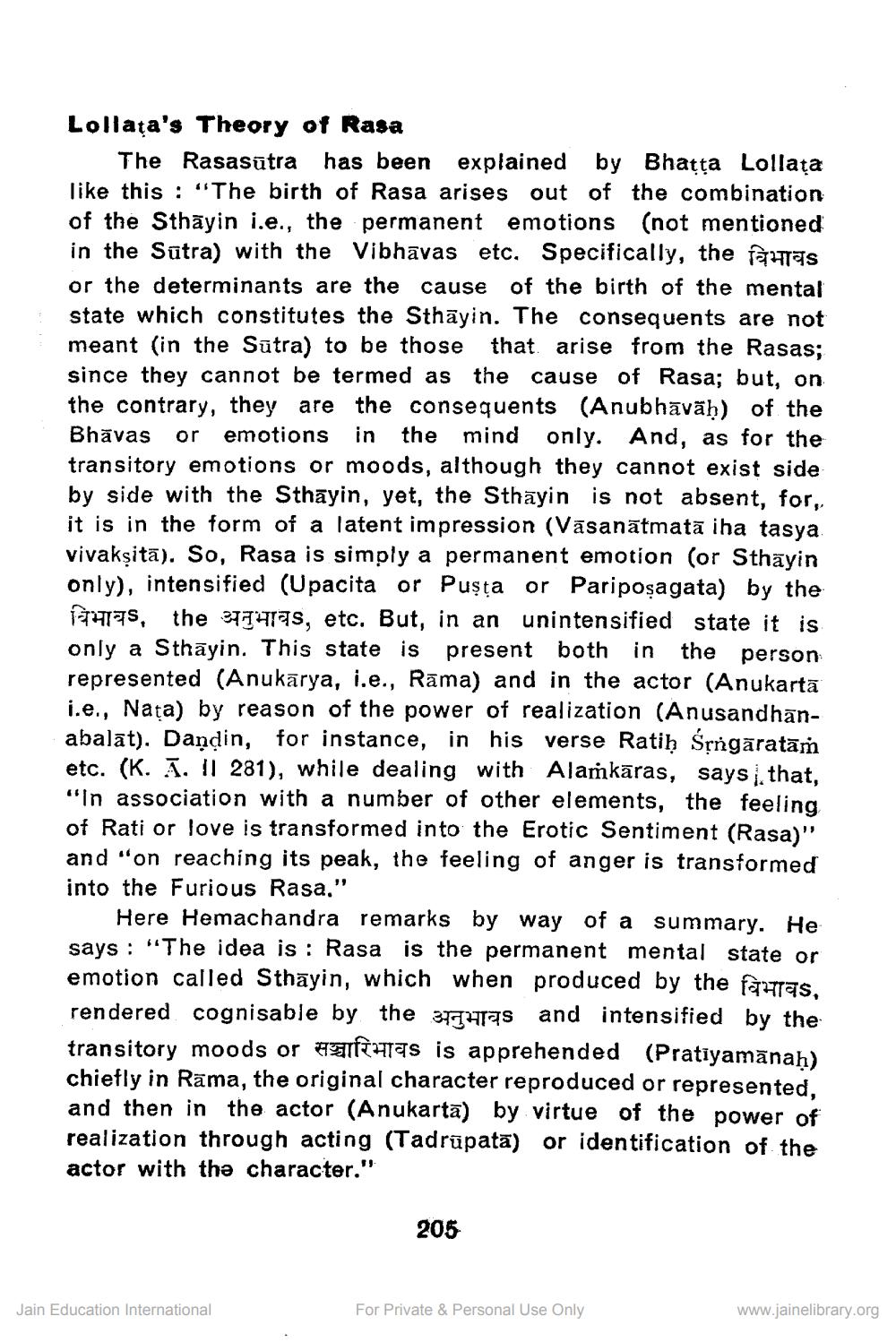________________
Lollata's Theory of Rasa
The Rasasūtra has been explained by Bhatta Lollata like this: "The birth of Rasa arises out of the combination of the Sthayin i.e., the permanent emotions (not mentioned in the Sutra) with the Vibhavas etc. Specifically, the fas or the determinants are the cause of the birth of the mental state which constitutes the Sthayin. The consequents are not meant (in the Sutra) to be those that arise from the Rasas; since they cannot be termed as the cause of Rasa; but, on the contrary, they are the consequents (Anubhavaḥ) of the Bhāvas or emotions in the mind only. And, as for the transitory emotions or moods, although they cannot exist side by side with the Sthayin, yet, the Sthayin is not absent, for, it is in the form of a latent impression (Vāsanātmata iha tasya. vivakṣitā). So, Rasa is simply a permanent emotion (or Sthayin only), intensified (Upacita or Pusta or Paripoṣagata) by the
s, the gas, etc. But, in an unintensified state it is. only a Sthayin. This state is present both in the person represented (Anukārya, i.e., Rama) and in the actor (Anukartā i.e., Nata) by reason of the power of realization (Anusandhanabalāt). Daṇḍin, for instance, in his verse Ratiḥ Śṛngaratam etc. (K. A. 1 281), while dealing with Alaṁkāras, says that, "In association with a number of other elements, the feeling of Rati or love is transformed into the Erotic Sentiment (Rasa)" and "on reaching its peak, the feeling of anger is transformed into the Furious Rasa."
Here Hemachandra remarks by way of a summary. He says: "The idea is: Rasa is the permanent mental state or emotion called Sthayin, which when produced by the faas, rendered cognisable by the зs and intensified by the transitory moods or as is apprehended (Pratiyamānaḥ) chiefly in Rāma, the original character reproduced or represented, and then in the actor (Anukarta) by virtue of the power of realization through acting (Tadrupata) or identification of the actor with the character."
."
Jain Education International
205
For Private & Personal Use Only
www.jainelibrary.org




